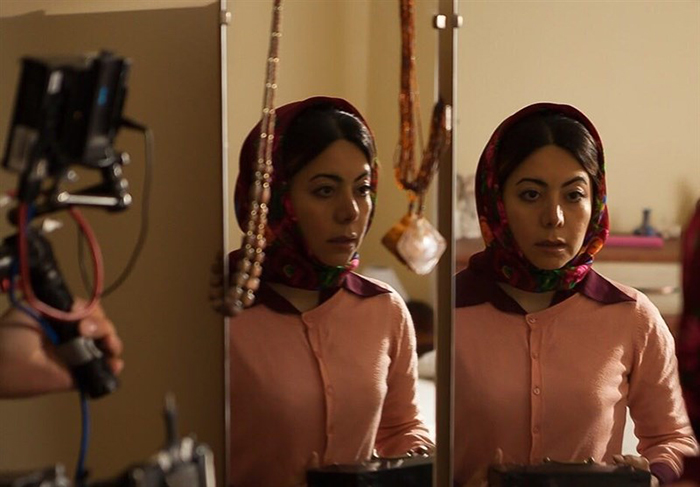A Critical Look at Autumn Memories by Ali FakhrMousavi
A Look at Autumn Memories by Ali FakhrMousavi – Autumn-Stricken Souls Awaiting Spring
CinemaCinema, Shadi Haji Mashhadi
Ali FakhrMousavi, an Iranian filmmaker who emigrated to Europe, has created his first full-length feature with the participation of Iran, the Czech Republic, and Ukraine — a film built upon a shared understanding of love and war.
This film does not belong to one country, one language, or one particular people. It conveys the collective pain of human lives and lands trampled by conflict. Although the story unfolds in Ukraine, with cultural and social details rooted in a rural area east of Kyiv, its central focus lies on the atmosphere of war and its consequences.
Looking at the film as a whole, and considering all the challenges of producing a co-production among three nations, it is commendable that Autumn Memories manages to preserve coherence, thematic integrity, and visual unity. The unwanted flames of war in Europe, kindled by separatists in the east against Ukrainian forces after the Crimean crisis, along with the devastating conflicts in Iraq and Syria, serve as the film’s backdrop, reviving the subject of war and its destructive aftermath. This time, in Eastern Europe, people continue their daily routines, yet beneath this ordinariness, one senses the crumbling of socialism’s historical weight and the gradual appearance of new wounds from recent wars.
The film avoids political dogma and geographic boundaries. Instead, it seeks to interpret war with hope, focusing not on its tragedies but on how it alters human destinies. Thus, it emphasizes love and peace as the eternal remedy for human suffering, suggesting that only through compassion and emotional connection can peace of mind and mutual understanding be achieved.
Despite some weaknesses in developing the character of the Iraqi refugee girl, the screenplay is generally well-structured: characters are introduced with proper context, dramatic tension emerges at the right moments, and narrative arcs are skillfully shaped. The one vague element is the refugee girl’s past — her hardships and trauma remain abstract, with no flashbacks or backstory to help the viewer fully empathize with her.
Another issue lies in the simultaneous love declarations of Sasha — a widowed woodcarver — and Anatoly — a young soldier-pianist — to the blind refugee girl. Their affections seem more a screenwriting device than an organic development rooted in emotional triggers. Yet, a strength of the film is how these feelings are expressed subtly, without overt physical gestures, relying instead on nuanced performances and inner emotional delicacy. This is made more natural by the involvement of foreign actors, who are not bound by the religious restrictions of Iranian cinema.
The film’s characters long for happiness and better lives, but war remains a constant barrier. Loneliness binds them all together: Tolya the soldier, Ima the fugitive, Aleksandr Nikolayevich the woodcarver, and even Natasha, the jealous yet devoted woman. The absence of love, security, and companionship scars their souls, while war — with all its inhuman, destructive force — ironically becomes the reason they find solidarity and closeness.
The music by Roman Korotin, a young Ukrainian composer, plays a crucial role in maintaining rhythm and narrative tension, carrying much of the film’s emotional weight.
Cinematography is another strong element. The camera movements are fluid and deliberate, capturing scenes in Sasha’s workshop, the cemetery, and conversational exchanges with precision. Even in stillness, the camera maintains a subtle wave-like motion, avoiding jarring shakiness, lending vitality to shifts between close-ups and medium shots. This approach deepens immersion into the characters’ inner worlds.
Together, the music, visuals, and Eastern European–inspired atmosphere create a nostalgic, melancholic harmony. Folkloric elements in costume and set design enrich the authenticity without undermining the universality of the film’s themes.
The ending is one of the screenplay’s highlights: the young soldier, while still in love, fulfills the girl’s wish before leaving on an uncertain path to defend his homeland. Meanwhile, the girl’s painful fate moves toward a new beginning and possible happiness.
The film was screened in Iranian cinemas with Persian dubbing. However, the use of familiar Iranian dubbing voices for foreign actors became a weak point: had the film been presented in its original language with Persian subtitles, audiences could have better appreciated the actors’ genuine performances, natural tones, and emotional delivery.
Experiences like Autumn Memories hold promise for Iranian cinema, showing the value of international collaboration. Joint artistic projects like this, especially in cinema, can also foster connections across cultural, social, and economic domains, lighting the way toward a world free of turmoil and destructive wars.
Published in Art and Experience Monthly